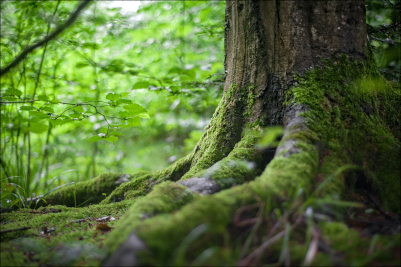
Most plants have the ability to communicate. Fragrances in the air function as carriers of messages and also beneath the earth all plants are connected with their roots. That way, the flora forms a gigantic network that benefits everyone! They warn each other, send SOS signals, attract beneficial insects, drive away pests and coordinate their behaviour. So far, more than a thousand scent vocabularies are known, but not all of them appear in one plant. There is a basic set of five to ten scents that are common to all plants. Each plant species additionally has its specific fragrances that are only used for intraspecific communication.
The example of the tomato plant and the tobacco cutworm shows perfectly how the warning system works. Leaves, that are infected with the vermin, firstly start the production of (z) -3-hexenyl-vicianosid, which inhibits the growth of the tobacco cutworm. But more importantly, the infested tomatoes emit a chemical messenger substance that is transported to other, healthy plants by air currents. This enables them to already produce hexenyl-vicianosid before getting in touch with the vermin which improves their chances of survival. Furthermore, the messenger is a precursor substance of hexenyl-vicianosid, so the infested tomatoes also supply their conspecifics with a source for their defense.
Tomatoes don’t only communicate amongst each other but also with insects. They are able to distinguish different pests by their saliva and to attract predators that are specialised on the detected vermin If a plant is for example infested by caterpillars, it emits a scent that attracts darwin wasps. That way the tomato is freed of the caterpillars and the wasps have a bountiful food source.
Under the earth trees and other plants form huge networks with their roots and underground fungal threads. Scientists also call these networks Wood Wide Web(www). Apart from the basic symbiosis between the mycorrhizae and the trees, the Wood Wide Web permits the exchange of information and nutrients across the forest. A young seedling can for example receive sugars from its stronger neighbours. Also warnings of different types of vermin can be sent through the mycorrhizae network. But also outside of the forest plants are connected by fungal threads. A laboratory experiment showed that millet reaches twice its normal height when it grows next to flat plants. Both species exchange nutrients and minerals which benefits their growth. Researchers are convinced that mixed cultivation, as it was common in the agriculture of the past, could enable a permanent exchange between the species that would increase harvest naturally.
Sources:
https://zeitpunkt.ch/news/artikel-einzelansicht/artikel/pflanzen-kommunizieren-unter-der-erde.html
